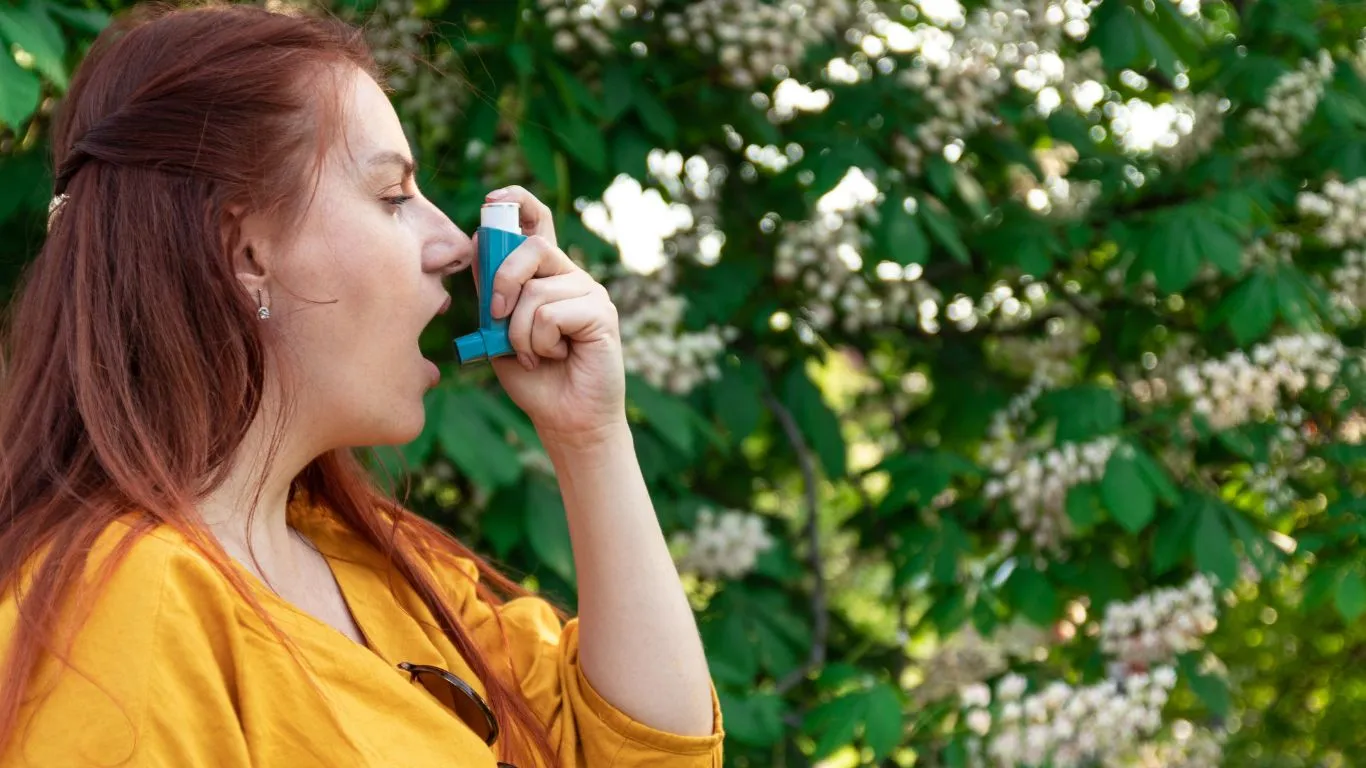Yoga Breathing for Asthma – A Natural Approach to Managing Symptoms
Struggling to manage asthma symptoms? Yoga breathing techniques may be a game-changer for your respiratory health. In this article, we dive into how yoga can help people with asthma breathe easier and manage their condition more effectively.

How Yoga Breathing Helps Asthma
Yoga breathing exercises focus on slowing down your breath, deepening each inhale and exhale, and creating more space in the lungs. But what makes yoga breathing special for asthma? It’s all about improving airflow, reducing stress, and strengthening the respiratory muscles.
Asthma causes inflammation and narrowing of the airways, making it harder to breathe. By practicing controlled breathing, you help train your lungs and diaphragm to work more efficiently. This can reduce the strain on your lungs, making it easier to breathe when you’re facing a flare-up. Additionally, focusing on your breath can help calm your mind and reduce stress, which is often a trigger for asthma attacks.
Benefits of Yoga Breathing for Asthma
- Improved Lung Function: By practicing deep breathing, you increase lung capacity and improve overall respiratory function.
- Reduction in Stress: Yoga breathing exercises can help activate the parasympathetic nervous system, which helps reduce stress and anxiety—two common asthma triggers.
- Enhanced Oxygen Flow: Controlled breathing ensures that more oxygen reaches your lungs, making it easier to take full breaths and maintain steady airflow.
- Better Control Over Breathing: Yoga helps you develop awareness of your breath, which is particularly helpful during an asthma attack when staying calm and focused can make a big difference.

Yoga Breathing Techniques for Asthma
Now that we’ve covered the benefits, let’s look at some specific yoga breathing techniques that can be particularly helpful for asthma sufferers.
1. Diaphragmatic Breathing (Belly Breathing)
This technique focuses on breathing deeply into the diaphragm rather than shallow breaths into the chest. It helps engage the diaphragm and improves airflow to the lungs.
- How to Practice:
- Sit or lie down in a comfortable position.
- Place one hand on your belly and the other on your chest.
- Breathe in slowly through your nose, allowing your belly to rise as you fill your lungs with air.
- Exhale slowly through your mouth, feeling your belly fall.
- Repeat this for 5-10 minutes, focusing on deep, slow breaths.
2. Ujjayi Breathing (Ocean Breath)
Ujjayi breathing is often used in yoga to create a calming effect. It involves slightly constricting the throat to create a soft sound, like ocean waves, during each breath.
- How to Practice:
- Sit in a comfortable position with your spine straight.
- Breathe in deeply through your nose, slightly constricting your throat.
- Exhale slowly through your nose, maintaining the throat constriction to create the ocean sound.
- Repeat this process for 5-10 minutes, focusing on slow, even breaths.

Tips for Incorporating Yoga Breathing Into Your Routine
Ready to get started? Here are some practical tips for making yoga breathing a regular part of your asthma management plan:
- Start Small: If you’re new to yoga breathing, start with just 5 minutes a day and gradually increase as you get more comfortable.
- Combine With Yoga Poses: Pair your breathing exercises with gentle yoga poses to enhance relaxation and improve flexibility.
- Practice in a Calm Environment: Find a quiet space where you can focus without distractions.
- Be Consistent: Like any skill, consistency is key. Practice regularly for the best results.

Conclusion
Yoga breathing is a simple yet powerful tool that can help individuals with asthma manage their symptoms and improve their overall respiratory health. Whether it’s diaphragmatic breathing, Ujjayi breathing, or Nadi Shodhana, incorporating these techniques into your daily routine can bring significant benefits. Remember, consistency is key, and starting small is better than not starting at all!
Appendices
FAQs
- Can yoga breathing cure asthma? No, yoga breathing cannot cure asthma, but it can help manage symptoms and improve overall respiratory health.
- How often should I practice yoga breathing? Aim for at least 5-10 minutes daily and increase duration as you feel comfortable.
- Is yoga breathing safe for everyone? Generally, yes, but it’s best to consult a healthcare provider if you have severe asthma or other respiratory conditions.
- Can kids with asthma practice yoga breathing? Yes, under supervision, children can benefit from yoga breathing to manage asthma symptoms.
- What’s the best time to practice yoga breathing? Morning or evening in a calm environment works best for most people.
References
- American Lung Association (2023). “Yoga and Asthma Management.” Read More
- Journal of Respiratory Health (2021). “Yoga Breathing Techniques: Benefits and Risks.” Read Article
- Smith, J. (2024). “Integrating Yoga for Asthma Relief.” National Asthma Association. Visit Site
Disclaimer: The information provided in this article is for educational purposes only and should not be used as a substitute for professional medical advice. Always consult with a healthcare provider before starting any new exercise or treatment, especially if you have asthma or other health conditions. Individual results may vary.

Bianca Nala is a compassionate Nurse Practitioner with a strong background in primary and respiratory care. As a health writer for Healthusias.com, she combines her clinical expertise with a talent for clear, relatable storytelling to help readers better understand their health. Bianca focuses on topics like asthma, COPD, chronic cough, and overall lung health, aiming to simplify complex medical topics without losing accuracy. Whether she’s treating patients or writing articles, Bianca is driven by a single goal: making quality healthcare knowledge accessible to everyone.






